Back in June 2017, I finally managed to break my journey between north and south to spend time at one of our mediaeval cathedrals…

I had been going to do it for ages. Almost every trip north for the past few years has seen me take the back roads rather than the motorway… and with each trip, the three carved spires have drawn my eye and a determination that one of these days, I was going to stop and explore. The trouble is that usually, I drive up after work and don’t have a great deal of time… and I drive back south very early, on my way back to work… so I have even less. What with one thing and another, I had never managed to stop.

This time, however, I had time. Granted, it would be early… probably way too early for the cathedral to be open to visitors… but it was a beautiful morning and they can’t close the exterior and that alone would be worth a visit.

Even from the distance at which I had been passing by, you could see the building was ornately carved. I was not prepared, though, for just how ornate the frontage was. It is quite breathtaking… until you get up close and realise just how crisply carved it is and begin to wonder about how much of what can be seen may be nineteenth-century restoration.

The Gothic cathedral of St Chad and Saint Mary is not the biggest, by any manner of means, but it is quite splendid. It is the only mediaeval cathedral in the country with three spires and it sits within a space preserved by the original ‘Close’. The Cathedral Close was usually an area extending around the church, both owned and governed by ecclesiastical, rather than civil authority. It would contain the homes of the clergy and church officials and was often gated to protect the community during times of unrest. The Close at Lichfield is still beautiful, lined with many old and gracious buildings that seem to watch over the church at its heart.

The area has been important for a very long time. The famous Staffordshire Hoard was found close by, consisting of over three and a half thousand pieces of gold, silver and intricate garnet cloisonné work, all of it beautiful for its craftsmanship and artistry, and all of it around one and a half thousand years old.

Anglo-Saxon gold hilt fitting with garnet cloisonné. Image: Flickr – portableantiquities
The name, Lichfield, is thought to derive from the name of a Romano-British town, Letocetum, whose remains, in the nearby village of Wall, I had visited a while back. Letocetum meant “Greywood” in Latin. In Old English, that became Lyccid, and Lyccidfeld, the country of the grey wood, became Lichfield.

There is a local tradition, though, which says that ‘Lichfield’ actually means the field of the dead. It refers to a story that, in 288, the Romans martyred three Christian kings on the orders of Diocletian. Although the story is not supported by any evidence so far, the city has used the seal of the martyrs since 1548.

Whatever the origin of the name, there has been human occupation in the area since the earliest times and some evidence to support the idea that it was already seen as a sacred place when Chad was elected Bishop of Mercia and moved his See from Repton to Lichfield in 669. Oddly enough, I had been thinking on the drive up that I would have to return to Repton and see the Anglo-Saxon crypt that had been locked on my previous visit. It almost seemed as if this visit to Lichfield cathedral was picking up where we had left off…

Chad, who was venerated as a saint immediately after his death, was interred in the cathedral. His bones lay in a shrine behind the altar, while his head was placed in a special ‘Head Chapel’ where pilgrims could come to pay their respects. The tale of his bones is far longer than that of his life and worthy of a longer telling. His tale and that of the ancient kingdom of Mercia to whom he ministered, have always featured large in our travels and research… and that is without the whole severed head thing that has been with us since the early days of our adventures.

Lichfield Cathedral was originally built in 700 by Bishop Hedda in order to house the bones of St Chad and accommodate for the large number of pilgrims the saint was bringing to the town. In 1085, work began to replace the wooden cathedral with a Norman one of stone. In 1195, work began on the present building; most of it dates to the thirteenth century, with the Lady Chapel being the ‘youngest’ part of the building and dating to around 1330.

During the English Civil War, the cathedral became the site of three sieges between 1643 and 1646. Surrounded as it was by a ditch and bank, it made an excellent defensive position and became, quite literally, a battleground between Prince Rupert of the Rhine’s Royalist troops and the Parliamentarians. Rupert’s forces attacked the cathedral and detonated the first ever mine on English soil.

The cathedral suffered extensive damage; one of the spires was destroyed, all the stained glass was smashed to smithereens. After the restoration of the monarchy, King Charles II donated funds to help restore the cathedral and Bishop Hackett began the work around 1660. It would take until the 1800s to complete the restoration of the cathedral and, until the work was almost complete, King Charles’ statue looked on. The statue now stands outside the church, one of many old monuments that are built into the exterior of the building.

I had been right to question the crispness of the carving on the West Front, though the style is about as authentic as it can be. Our old friend, Sir George Gilbert Scott had been commissioned to recreate and restore the West Front and had done so with some sympathy, using original materials as far as possible and replacing what was lost with close approximations. Internal restoration in the Victorian period had also used much original work as its inspiration, so the battered cathedral rose again like a phoenix. Thirteen hundred years of history and more rose before me on that sunny morning, an evolution in stone. And, much to my surprise… the doors were already open…








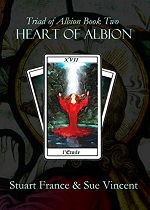






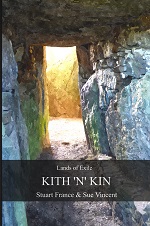


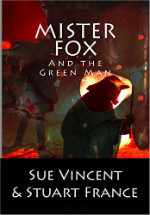





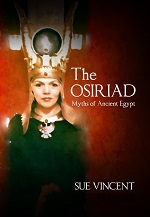











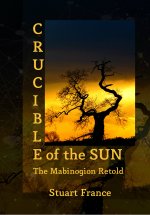


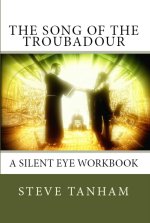


Impressive structure!
LikeLiked by 1 person
It is a fantastic building, Alethea… and you would love the feel of the place. Its roots go deep.
LikeLiked by 1 person
I think you’re right. I wouldn’t mind paying it a visit someday…boy do I miss traveling!
LikeLike
I know the feeling…
LikeLike
A really stunning cathedral, Sue… And such a fascinating history!
LikeLike
Thanks for sharing, Jaye. Yes, it is a very beautiful building…and I really need to go back and explore it further…when we are allowed.
LikeLiked by 1 person
I would like that too…
LikeLike
🙂
LikeLike
Reblogged this on Anita Dawes & Jaye Marie ~ Authors.
LikeLiked by 1 person
I really enjoyed our visit to Lichfield Cathedral, Sue. I also enjoyed visiting the home of Charles Darwin’s grandfather in the village.
LikeLike
The herb garden at Erasmus Darwin’s home was my favourite, I think… so many rare plants and beautiful old roses in bloom wen i was there!
Mind you, although that part of Lichfield retains a rather villagey feel, it is a city because of the Cathedral.
LikeLike
So ornate and impressive. Those sights (like the three spires) are just not seen here in the US. I’m so glad the place was restored after being destroyed since someday I’d like to see it. I was also intrigued by the Staffordshire Hoard, something I hadn’t heard about before. I did a quick internet search. Wow, Sue. What history. Thanks for sharing your photos and knowledge. 😀
LikeLike
The Staffordshire Hoard is utterly incredible for the workmanship. I remember seeing a first documentary on it many years ago that showed the delicacy of the inlaid jewel-work, crafted with a process we would struggle to match today.
LikeLiked by 1 person
Have you done a post on it? The info that I looked up was an overview and sketchy about the reason it was all buried and forgotten. What a story!
LikeLike
No, I have yet to see most of it in person. But you can explore the hoard here: https://www.staffordshirehoard.org.uk/ and there is a video on youtube here: https://youtu.be/CcriG8UIRVI
LikeLiked by 1 person
Thanks!
LikeLiked by 1 person
Reblogged this on France & Vincent.
LikeLiked by 1 person
What an amazing frontage! The restoration was so good! Can’t wait for more.
LikeLike
It is a stunninglitle cathedral…with so much to see.
LikeLike